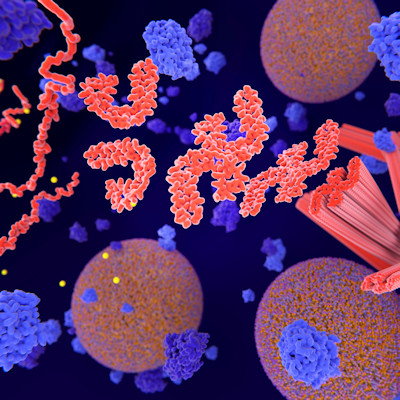August 25, 2022 -- Researchers have found a way to increase the clearance of waste products such as amyloid beta from the brains of mice by ramping up a genetic quirk known as readthrough. The same strategy could be effective for neurodegenerative conditions characterized by the buildup of toxic proteins, such as Alzheimer’s disease and Parkinson’s disease.
The study team at Washington University School of Medicine in St. Louis noticed something interesting about the brain protein aquaporin 4 -- it's synthesized with an extra little tail at the end. At first, they thought it represented an occasional glitch during protein manufacturing, but then they found the gene sequence was conserved across species and it had a striking pattern in the brain: It appeared only in structures that are important for waste clearance (Brain, August 24, 2022).
Upon further reflection, the researchers also discovered the long form of aquaporin 4 behaved differently in the brain than the regular form, specifically in the endfeet of astrocytes. The endfeet wrap around tiny blood vessels in the brain and help regulate blood flow. The researchers screened 2,560 compounds for the ability to increase readthrough of the aquaporin 4 gene and found two: apigenin (a dietary flavone) and sulphaquinoxaline (a veterinary antibiotic).
Using genetically engineered mice with high levels of amyloid in their brains, the team treated the mice with apigenin, sulphaquinoxaline, an inert liquid, or a placebo compound that has no effect on readthrough. Mice treated with either apigenin or sulphaquinoxaline cleared amyloid beta significantly faster than those treated with either of the two inactive substances.
The approach could be used as a novel method to treat Alzheimer's and other neurodegenerative diseases. It could also be used for other diseases such as Parkinson's where there's a toxic buildup of alpha-synuclein because the readthrough isn't necessarily specific to amyloid beta.
Going forward, the researchers are on the hunt for better drugs that influence the production of the long form of aquaporin 4 and are testing several derivatives of sulphaquinoxaline and additional compounds. The results also need to be translated into the clinic and tested on humans, they added.
Copyright © 2022 scienceboard.net








